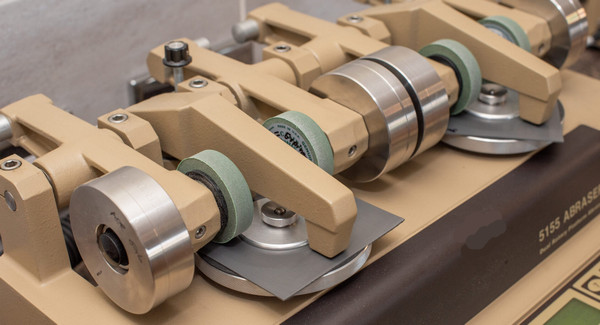What is the ASTM for Taber linear abraser?

The Taber Linear Abraser is a widely used instrument for evaluating the abrasion resistance of various materials. The ASTM International (formerly known as the American Society for Testing and Materials) has established a standard specifically for the Taber Linear Abraser test method. The standard is known as ASTM D7255-19, "Standard Test Method for Abrasion Resistance of Leather (Rotary Platform, Double-Head Method)". Here's a detailed explanation of the ASTM standard for the Taber Linear Abraser:
1. Purpose of the Test:
The ASTM D7255-19 standard provides a test method for determining the abrasion resistance characteristics of leather materials. It is commonly used to evaluate the durability and wear resistance of leather products such as garments, upholstery, footwear, and accessories.
2. Test Principle:
The Taber Linear Abraser, also known as the Taber abrader, applies a specified level of abrasive force to the leather surface. It consists of two abrasive wheels that rotate in opposite directions, creating a rubbing action against the leather test specimen. The wheels traverse a linear path on the leather surface, simulating the real-world abrasion wear experienced by the material.
3. Test Equipment:
The equipment required for conducting the Taber Linear Abraser test includes the Taber abrading wheels, a test specimen holder, and a drive mechanism to control the linear motion of the abrading wheels. The abrading wheels are typically made of a specific type of abrasive material to generate controlled wear on the leather surface. The equipment should be calibrated and maintained according to the manufacturer's instructions.
4. Test Procedure:
The ASTM D7255-19 standard outlines the detailed test procedure for conducting the Taber Linear Abraser test on leather materials. The procedure usually involves the following steps:
a. Prepare the leather test specimen according to specified dimensions and conditioning requirements.
b. Mount the test specimen securely onto the specimen holder, ensuring a proper fit.
c. Adjust the test parameters such as test load, speed, and number of cycles according to the standard requirements.
d. Start the Taber abrader and allow it to traverse the linear path on the leather surface.
e. Conduct the specified number of cycles, continuously monitoring the abrasive wear on the leather specimen.
f. Inspect and evaluate the appearance and performance of the leather specimen after testing.

5. Performance Evaluation:
The results of the Taber Linear Abraser test are typically evaluated based on the visual appearance, such as changes in color, gloss, texture, and surface damage of the leather specimen. Qualitative and quantitative assessments can be made by comparing the tested specimen with a reference sample or using specific rating scales. The test data provides valuable information on the abrasion resistance properties of the leather material.
6. Compliance and Certification:
Manufacturers and suppliers may seek compliance with the ASTM D7255-19 standard to demonstrate the abrasion resistance performance of their leather products. Compliance with the standard ensures consistency in testing methodology and facilitates fair comparisons between different leather materials. Certification and compliance documentation can provide confidence to consumers and regulatory bodies that the tested leather products meet the specified requirements.
In summary, the ASTM D7255-19 standard specifies the test method for evaluating the abrasion resistance of leather materials using the Taber Linear Abraser. By following this standard, manufacturers can assess the durability and wear resistance of leather products, ensuring that they meet industry standards and customer expectations.
2023-08-31 10:52

